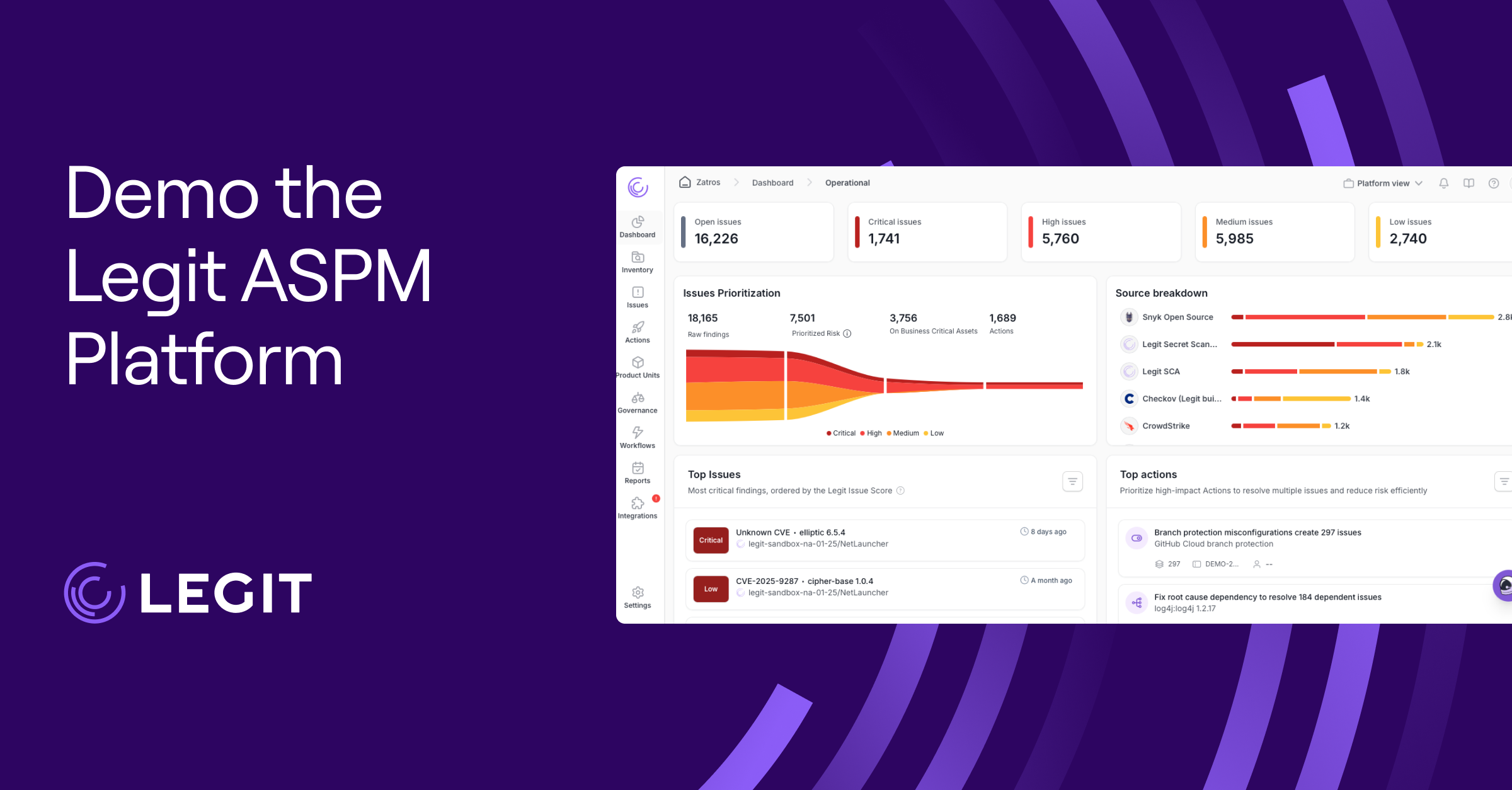Many organizations group cybersecurity and data protection together, but each plays a distinct role in your security posture. Cybersecurity focuses on defending networks, systems, and software from threats like cyberattacks, while data protection is about preserving the privacy and availability of personal and business data.
This article will explain the differences between the two, how they complement each other, and offer practical tips for strengthening both.
What Is Cybersecurity?
What cybersecurity does, in practice, is strengthen your overall security and data protection strategy by preventing disruptions that could compromise sensitive information or shut down operations. Threats can come from external attackers, insider misuse, or unpatched vulnerabilities across connected systems.
With the right approach, cybersecurity gives you the control and visibility to stay ahead of evolving threats and maintain trust with customers and stakeholders. But it goes beyond tools like firewalls or antivirus software. It’s a broader strategy that combines people, processes, and technology to manage digital risk. This includes monitoring activity and identifying weaknesses before attackers exploit them.
What Is Data Protection?
Data protection refers to the processes and technologies to safeguard personal, sensitive, and business-critical information from loss or misuse. Cybersecurity focuses on protecting systems, and data protection preserves the integrity and confidentiality of the systems' information.
Organizations apply data protection across the entire data lifecycle, from collecting and storing data to accessing, sharing, and eventually deleting it. The primary goal is to ensure information remains accurate and recoverable, which includes preventing unauthorized edits, protecting data from corruption or leaks, and ensuring it’s still available in case of an incident. If you're wondering how data is protected in practice, it often involves encryption, data backup strategies, role-based access controls, and data classification.
These measures also support broader goals tied to cybersecurity and data privacy. They help organizations meet regulatory requirements and give individuals more control over their personal data. When done well, data protection also prevents business disruptions, reduces legal risk, and preserves trust with customers and stakeholders.
Cybersecurity and Data Protection: Key Differences
Cybersecurity and data protection keep information secure, but they approach it from different angles. Cybersecurity protects the infrastructure that supports data—the networks, endpoints, applications, and access points. Data protection, meanwhile, focuses on the data itself, keeping it accurate, private, and recoverable, even if an incident occurs.
Another key difference is scope. Cybersecurity includes practices like vulnerability management and incident response. Data protection includes encryption, masking, and retention policies. And while cybersecurity lays the groundwork for strong data privacy, it doesn’t cover everything regulators expect. Organizations also take on legal and ethical responsibilities related to data protection, consent management, respecting data subject rights, and ensuring appropriate use of information throughout its lifecycle.
The Importance of Combining Cybersecurity and Data Protection
Combining cybersecurity with strong data security measures creates a unified defense strategy that addresses system-level threats and information-specific risks. You gain greater visibility, faster recovery, and a stronger compliance posture.
Here are the key benefits of bringing both strategies together:
Reinforce Effectiveness
Cybersecurity stops intrusions, while data protection keeps the information inside safe and recoverable even if something slips through. Together, they form a security-focused data protection strategy that reduces the chance of a breach becoming a disaster.
Prevent Data Breaches
Many breaches begin with unauthorized access to sensitive data. While cybersecurity limits access through controls and monitoring, data protection adds safeguards like encrypted storage and data masking. They significantly reduce the risk of internal misuse and external threats.
Build Customer Trust
A well-protected environment sends a message. Customers are more likely to trust you if you demonstrate a clear commitment to cybersecurity and data privacy, especially when their personal data is on the line.
Support Regulatory Compliance
Many data privacy laws require granular control over data handling. A combined strategy helps organizations meet these compliance requirements, from technical safeguards to access governance and user rights management.
For example, regulations such as the General Data Protection Regulation (GDPR) and the California Consumer Privacy Act (CCPA) require you to document processes, control access, and demonstrate compliance through regular assessments and reporting.
Reduce Business Impact
A breach can lead to fines, downtime, legal exposure, and reputational damage. Coordinating cybersecurity and data protection strengthens incident response and recovery, limiting how far an attack spreads and how long it takes to bounce back.
How to Improve Cybersecurity and Data Protection
Improving cybersecurity and data protection doesn’t always mean buying more tools. Often, it’s about tightening the basics, reducing exposure, and making security part of your organization’s day-to-day decisions.
Here are a few best practices that combine strong defenses with smart data governance:
- Implement multi-factor authentication (MFA): Weak or reused passwords remain one of the easiest ways attackers gain access. MFA strengthens access control by adding a second layer, like a phone prompt or hardware token, that stops threat actors from moving freely—even if they’ve stolen login credentials.
- Carry out regular risk and vulnerability assessments: Understanding where you’re vulnerable is the first step toward security. These assessments help you prioritize remediation by identifying technical flaws, misconfigurations, and overlooked risks across systems and user access. They also prepare organizations for a security or compliance audit.
- Classify data based on its sensitivity: Not all data needs equal protection. Classifying data—like public, confidential, or customer personally identifiable information (PII)—allows you to apply the right controls to the right data sets, improving protection and performance.
- Integrate security into your SDLC: Embedding security in the SDLC helps you detect and fix vulnerabilities before they become expensive problems. Secure coding, automated scanning, and code reviews reduce the risk of exposing sensitive data in production. Many teams use SDLC security best practices to close gaps earlier in the development cycle.
- Secure your software supply chain: Third-party code and CI/CD tools are now a major attack surface. Verifying dependencies, validating build processes, and applying continuous monitoring prevent tampering and ensure integrity across environments. These are some of the core principles of effective software supply chain risk management.
- Train your team on modern threats: Technology can’t catch everything. People play a huge role in security outcomes. Regular training on phishing, data handling, and social engineering creates a culture of awareness, turning users into part of the defense instead of a vulnerability.
- Back up critical data and test your recovery plan: Data loss isn’t always the result of a cyberattack. Hardware failure, accidental deletion, or cloud outages can be just as damaging. Regular, tested backups ensure that recovery is possible without starting from scratch when something goes wrong.
Upgrade Your Security Data Protection With Legit Security
To strengthen your cybersecurity and data protection approach, you need more than patchwork tools. You need visibility, control, and automation built into the development process.
Legit Security’s platform delivers that by securing the software supply chain from code to cloud. It helps you detect risks early, enforce security policies, and meet compliance requirements without slowing down delivery.
If you want to level up your defenses, start with the fundamentals of software supply chain security and see why Legit Security is a game changer in cybersecurity for modern DevOps and AppSec teams. Request a demo to learn more.
Download our new whitepaper.


